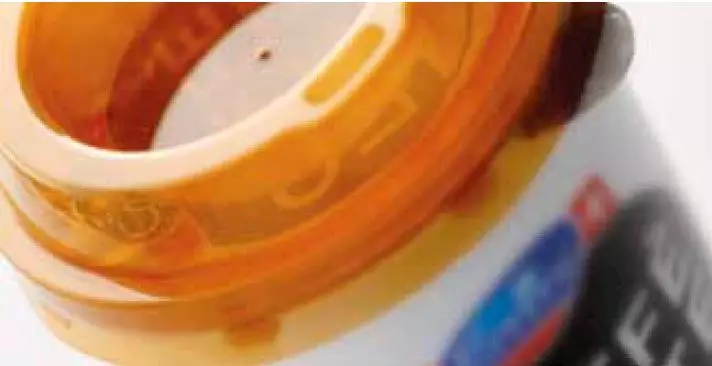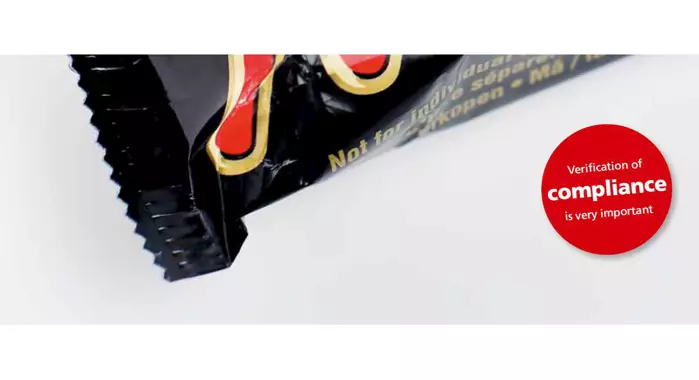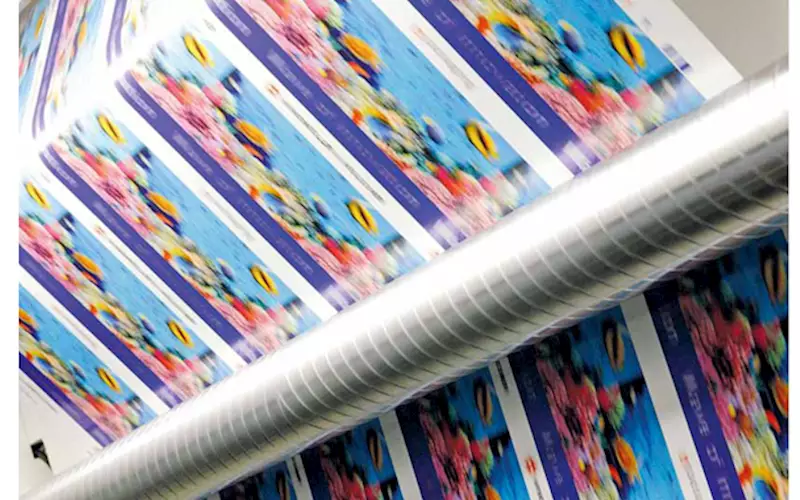Compliance: Ink migration in food packaging
Knowledge transfer and collaboration among all the stakeholders in the packaging supply chain is vital. In the third article of the series, Siegwerk's Jatin Takkar shares the key parameters associated with application of ink and verification of packaging compliance.
Ink manufacturers can certify the suitability of an ink series for food packaging applications, but they cannot warrant the legal compliance of the final printed packaging. Many other parameters have an influence on complian
31 May 2017 | By WhatPackaging? Team
The first step, to clearly define the packaging specifications, is usually within the responsibility of the food industry. The manufacturer of the packaging and the filler are responsible for the properties of the food packaging and its compliance with legal requirements. The packaging ink suppliers are responsible for the composition of the preparations. Due to the complex nature of the packaging chain, all members have to exchange relevant information.
Under GMP Regulation (EC) No 2023/2006 and its Annex, which only refers to the application of printing inks to the non-food contact side of a material or article and to the storage of printed articles, the ink manufacturer does not have an independent responsibility in this regard, however, the converter who actually applies the ink or coating is responsible for compliance with this regulation.
As an example, the Indian Standard IS 15495 is similarly clear about the responsibility of the printer. It states: “The responsibility of the printer and the converter is to ensure that the food packages are manufactured and stored in such a manner by which any preventable transfer of material from the ink or coating to the food contents is avoided, even if such transfer is unobjectionable on the grounds of health, odour, and flavour.”
Good Manufacturing Practice
As an ink manufacturer, Siegwerk confirms that every packaging ink is generally fit for the intended purpose. However, since most of the process areas are outside the control of the ink manufacturer, it is not possible to provide any certification that the printed ink film as applied on the substrate will automatically lead to fully compliant food packaging. There is wide consensus on this principle, which is laid down and detailed out in manifold guidelines on converter industry Good Manufacturing Practices, such as the ‘Code of good manufacturing practices for flexible and fiber-based packaging for food’ (www.flexpack-europe.org), the ‘Industry guideline for the compliance of paper and board materials and articles for food contact’ (www.citpa-europe.org), or the ‘European Carton Makers Association Good Manufacturing Practices guide’ (www.ecma.org).
The ultimate verification of compliance can therefore only be accomplished for the finished food packaging. The manufacturer of the final article has the legal responsibility to ensure that it is fit for the intended purpose as food packaging. Recognising this principle in conjunction with the responsibility of the filler for the final packed food, the guidance document ‘Specifications in the Food Packaging Chain‘, issued by the German Federation of Food Law and Food Science (BLL, document available under: www.bll.de/de/lebensmittel/verpackung/specifications-in-the-food-packaging-chain.pdf, emphasises the benefit of specifications in particular between the filler (the food packer) and the converter. The BLL, an institution which is widely recognised as a leading standards setter in the food packaging chain, focuses on the migration hazard and how to prevent it via communication: “Specifications are the result of a mutual harmonisation and communication process between the supplier (converter) and customer (filler). They contain a detailed description of the properties of a product, in particular, its technical and specific suitability.”

The BLL guide is clear in its message that concrete, targeted specifications are the basis for the verifications which have to be performed by the manufacturer of the final packaging article. It provides detailed workflows and communication processes, as well as concrete checklists assessing barrier properties and migration risks. It is also applicable for the suppliers of the converter, including the ink manufacturer. All these guidances and standards make it evident therefore that the potential for migration and deterioration of organoleptic characteristics depends not only on the individual composition of the packaging ink but also on the printing conditions which are controlled by the converter.
|
The following main subjects, which also include essential properties to become included into specifications agreed between the food packer and the converter, shall be covered by specific requirements in the recognized converter’s Good Manufacturing Practices: |
|
|
|
Other practical measures
A checklist on processes and parameters potentially causing noncompliance is important. Long-term experience indicates that the following items should generally be checked by the printer and the packer/ filler prior to any print or packaging job. However, the following information can only be indicative and implies no warranty whatsoever.
Design of the food packaging
Barrier properties of packaging material
If migrants from printed ink layers diffuse more and more quickly – the worse the barrier properties of the materials wrapping the food are.
• Poor: Coated paper, uncoated paper, coated board, uncoated board, regenerated cellulose, polyethylene, ionomers, adhesive layers, printing varnish or lacquer coating layers, ethylene-vinyl acetate (EVA)
• Limited: Polyamide, polypropylene, polyethylene terephthalate, polyvinylidene chloride, metallisation layers
• Better: Appropriate SiOx and AlOx layers on polyethylene terephthalate, sufficiently thick layers of polypropylene, polyvinylidene chloride laquered PP or cellophane, Polymethyl methacrylate (PMMA) lacquered PP;
• Best (absolute barrier): Aluminum foil (>6 μm), tinplate, glass; sufficiently thick layers consisting of polyethylene terephthalate or polyvinylidene chloride (>12 μm)
Set-off depending on the surface
After printing, invisible set-off can occur within the reel or stack because the surface in contact with the printed layer may absorb migrants. The likelihood of set-off depends on the nature of the surface.
• Very high: Coating on paper, board, aluminum, plastics; regenerated cellulose; thin extruded layers of polyethylene or polypropylene
• High: Films or cups/tubs made of polyethylene, polypropylene, polystyrene
• Medium: Uncoated paper, uncoated board, polyamide, polyethylene terephthalate.
Set-off can be reduced if the surface is not completely even, but rough.
Design of the print
A high amount of ink and primer or overprint varnishes printed per surface unit (many superposed ink layers) can increase the amount of migrants and thus enhance migration. By default, Siegwerk assumes an upper standard dry ink film weight of 3 g/m² when formulating packaging inks and assessing the potential migration of concern, for example, via a worst case calculation.
The printer is responsible for the combinations of primers, inks and overprint varnishes, which are often from different suppliers. If they result in higher application weights, special attention is required. The printer has to verify the actual application weight before printing each individual job.
Surface/volume ratio of packaging
The larger the contact surface and the lower the volume or weight of the packed food, the more migrants may end up in the food.
Nature of the packed food
The type and nature of the food have an influence on the transfer of migrants. These migrants could either be present on the food-contact side of the packaging material due to the previous set-off or migrate via diffusion through the packaging material.
High uptake of migrants:
• Aqueous, acidic, alcoholic and/or fatty liquid food
• Fatty solid food in aqueous liquid food (e.g. mozzarella cheese)
• Fatty, powdery foods
• Fatty, pasty foods
Medium uptake of migrants:
• Aqueous pasty foods with no or minimal fat content
• Acidic pasty foods with no or minimal fat content
• Fatty and solid foods with a shape preventing full contact with the packaging (e.g. chocolate biscuit bar)
Low uptake of migrants:
• Solid and dry foods with no fat content
Shelf life of the packed food
Migration increases with time. The migrants in the printed layer could theoretically migrate completely within minutes; however, the normal migration is much slower. Thus, the longer the food is stored, the more migrants might end up in the packed food.
Processes to which the printed food packaging is exposed
Migration increases with temperature. Any thermal exposure can enhance substance transfers:
• Hot filling by the packer/filler
• Heating by oven, sterilisation in an autoclave and pasteurisation by the food manufacturer
• Heating by microwave, or by baking in a thermal oven, or boiling in the bag by the consumer
Printing parameters
Generally, the following parameters may increase the amount of migrants:
Drying process
Drying by heat (insufficient drying may lead to increased residual solvents that
might migrate)
• High printing speed leading to insufficient drying energy
• High amount of ink printed on the substrate
• Too high amounts of retarder in ink
UV curing (insufficient curing may lead to unreacted monomers and increased photoinitiator amounts)
• High printing speed – insufficient UV drying energy
• Loss of power of aged lamps (decrease of the UV radiation dose at print surface)
• High amount of ink/varnish printed on the surface – insufficient drying energy
• Addition of photoinitiator and/or acrylate monomer – insufficient drying energy
Print shop activities
Activities that may increase the risk of migration or lead to non-evaluated substances in the print:
• Adding printing additives to ink which are not recommended by ink manufacturer and not validated as fit for the purpose by the printer or not observing the maximum amount specified
• Inappropriate printing machine cleaning agents – substances may carry over to and contaminate the non-printed ink and thus the print
• Inappropriate cleaning of equipment in contact with inks, such as rollers and rubber blankets for offset – risk of carry-over if the printer also uses the same equipment for inks that are not intended for food packaging
• Inappropriate use of fountain solutions – risk of carry-over if offset printer also uses them on the same machine for inks that are not intended for primary food packaging
• Using the wrong dosage of hardener which therefore is out of the recommended range (in the case of two-component systems).
Winding to reel or stacking
Invisible set-off is enhanced by the following conditions in surface printing, off-line lamination or winding before lamination:
• Long time in the reel or stack
• High pressure in the reel or stack
• Storage above ambient temperature in the reel or stack

Verification
Depending on the potential level of risk linked to migration across the layer(s) between the print and the food and to invisible set-off, the printer should conduct representative practical investigations, such as organoleptic testing, migration assessment via worst-case calculation or – preferably – via practical analytical migration testing to cover each relevant application category.
Verification data on migration should be obtained via appropriate representative worst-case samples which cover every individual printed packaging material and article in its finished state, taking into account normal and foreseeable conditions of use.
Food packaging intended for particularly sensitive consumer groups (such as infants and small children) requires formal qualification in any case, as a rule via practical analytical migration testing. This is applicable as well for packaging without a functional barrier to migration which is intended for high-temperature exposure. All of these complex parameters need careful consideration by the partners in the packaging chain.

Jatin Takkar
Jatin Takkar is the deputy manager – product safety and regulatory at Siegwerk. He is a food technologist and has worked with various MNC’s like Nestle and Kraft Heinz before settling in at Siegwerk. At Siegwerk Takkar is responsible for the product safety and regulatory segment and ensures the formulation of compliant inks which are demonstrated by systems and supported by documentation. He is also involved in creating awareness on compliant ink systems.
This is the third article in the four-part article series on printing inks for food packaging by Siegwerk











 See All
See All